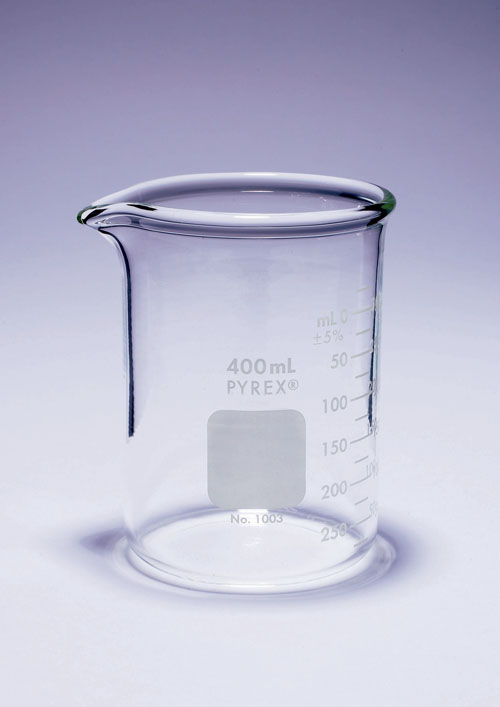Information: What chemicals can I use with PYREX borosilicate glassware?

Due to the demanding conditions that laboratory glassware is subjected to, maximum chemical toughness, minimum thermal expansion and high resistance to thermal shock are the key properties of 3.3 expansion PYREX borosilicate glass make it the ideal material for use in the laboratory.
Expansion (PYREX) borosilicate glass has a very high resistance to attack from water, acids, salt solutions, halogens and organic solvents. Only hydrofluoric acid, hot concentrated phosphoric acid and strong alkaline solutions cause appreciable corrosion of the glass. Neutral borosilicate glass (ASTM E-438 Type 1B) also has excellent chemical resistance properties which make it ideal for the storing or packaging of acidic, neutral and alkaline products and for injectable solutions. Soda-lime glass (ASTM E-438 Type 2) is less chemically resistant than borosilicate glass and is typically suitable for storing dry powders and for containers for general sample storage applications.
Physical Properties & Chemical Data for Glass
- Hydrolytic Resistance
For many applications, it is important that laboratory glassware has excellent hydrolytic resistance; e.g. during steam sterilisation procedures, where repeated exposure to water vapour at high temperature can leach out alkali (Na+) ions. Borosilicate glass has a relatively low alkali metal oxide content and consequently a high resistance to attack from water.
- Acid Resistance
Glasses with a high percentage weight of silica (SiO2) are less likely to be attacked by acids. PYREX 3.3 Expansion borosilicate glass is over 80% silica and therefore remarkably resistant to acids (with the exception of hot concentrated phosphoric acid and hydrofluoric acid). Glass is separated into 4 acid resistance classes and borosilicate glass corresponds to Class S1 in accordance with DIN 12116 and meets the requirements of ISO 1776.
- Alkali Resistance
Alkaline solutions attack all glasses and borosilicate glass can be classified as moderately resistant. The alkali resistance of borosilicate glass meets Class A2 requirements as defined by ISO 695 and DIN 52322.
Chemical Resistance Classes
Hydrolytic resistance (ISO 719): CLASS HGB1
Acid resistance (DIN 12116): CLASS S1
Alkali resistance (ISO 695): CLASS A2
Also read: Borosilicate Glass Maximum Temperatures
Link: https://www.labdirect.com.au/lab-blog/notice-boro...
Recent Posts
-
Pharmacy and Lab Measuring Cylinders with Double Scale - PYREX® Heatproof Glass
Our PYREX® cylinders conform to the highest CLASS A accuracy standards. These cylinders ar …15th Mar 2024 -
VIDEO: Why PYREX® lab glassware is preferred around the world
For 100 years, Corning has developed special glass for use in both chemical and life science laborat …13th Feb 2024 -
NEW: PYREX® Heatproof Slim-Line Lab Bottles
PYREX® Heatproof Slim-Line Lab Bottles - Save space on shelves, inside refrigerators and …12th Feb 2024
